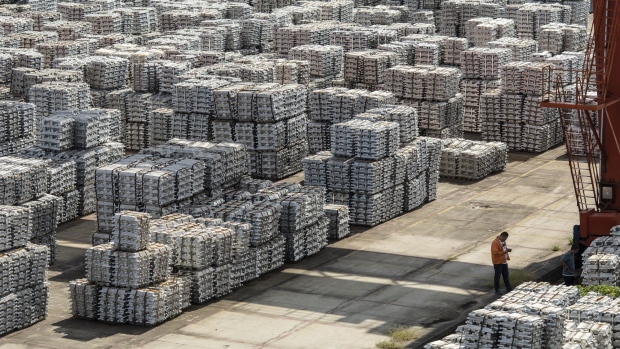Dec 9, 2021
China Steps Up Overseas Hunt for Ore Needed to Make Aluminum
, Bloomberg News

(Bloomberg) -- China’s aluminum industry, the world’s biggest, is becoming increasingly dependent on overseas supplies of the ore needed to make the metal, another sign of the nation’s chronic reliance on raw-material imports.
The aluminum used in everything from aircraft to drinks cans is made from alumina, an intermediate material produced from bauxite ore. Some 49% of this material will come from imported ore next year in China, up from 47% this year and about 30% in 2015, according to state-owned researcher Beijing Antaike Information Development Co. Bauxite imports may climb to 130 million tons in 2022 from around 110 million tons this year.
Depletion of local resources, falling ore grades and tighter environmental regulations have constrained domestic mining, and led to a decline in local bauxite production since 2018. Chinese alumina makers are renovating production lines to take more foreign bauxite and investing in major mining economies like Guinea and Indonesia to secure supply.
Supply Risks
Hangzhou Jinjiang Group is planning to boost imports of bauxite to 12 million tons next year from 8-9 million tons this year, said Guo Chunqiao, an analyst with the alumina producer. That should ensure that the company will continue to operate near full capacity next year. The producer will source the material directly from miners in Guinea, Indonesia, Australia, Jamaica and Malaysia to reduce purchase costs, Guo added.
With dependence on overseas ore increasing, the suppliers of bauxite are not diversified enough, and this poses risks for the future, said Yan Jin, an analyst with Beijing Antaike. Imports from Guinea, Australia and Indonesia represented 47%, 33% and 17% respectively of the country’s total inbound volumes in 2020. A coup in Guinea in September roiled the aluminum market and showed how rapidly concerns can erupt over raw material supplies.
Aluminum was steady at $2,628.50 a ton on the London Metal Exchange as of 12:18 p.m. in Shanghai, showing a 33% advance this year and holding its position as the best performing base metal after tin. Futures were down 0.3% in Shanghai. Other LME metals were mixed on Thursday, with zinc extending gains for a fifth day and copper down 0.4%.
©2021 Bloomberg L.P.


